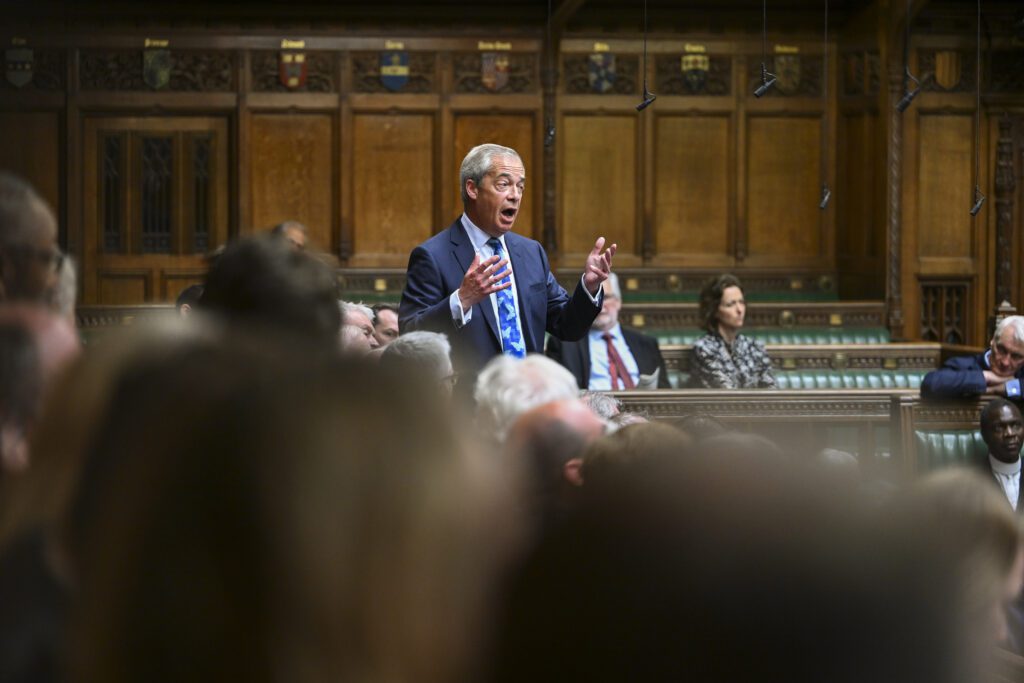The last few months have seen rising chatter about the over-representation of Reform UK by the British media, prompting the Liberal Democrats to launch a ‘balance the BBC’ campaign in response.
But is this actually true, and if so, to what extent?
A new study by Cardiff University has given credence to the Lib Dems’ campaign, finding that between January and July this year Reform UK attracted nearly double the coverage of the Lib Dems in mainstream TV news bulletins.
What is ‘balance the BBC’?
‘Balance the BBC’ is a campaign launched by the Liberal Democrats earlier this month.
Their central claim is that the “BBC is giving Nigel Farage and Reform far too much coverage.”
According to Lib Dem Culture, Media and Sports Spokesperson, Max Wilkinson MP: “The BBC is following Farage around like a lost puppy and the resulting wall-to-wall coverage is giving legitimacy to a man who wants to do to Britain what Trump is doing to America.”
“The only way to counter Farage’s hateful and divisive politics is with fair and representative journalism that makes space for more decent voices – and for that we need a balanced BBC.”
In an open letter to Ofcom Chied Executive Melanie Dawes, Wilkinson criticised the under-representation of the Lib Dems in the BBC’s coverage relative to their parliamentary strength.
“The coverage of my party, the Liberal Democrats, has been disproportionately low”, despite the fact that “in Parliament the Liberal Democrats represent eighteen times as many constituencies as Reform UK.”
Reform currently have 5 MPs (including the recently defected Tory MP Danny Kruger), while the Lib Dems have 72.
To counteract this, the Liberal Democrats have called on the BBC to “commit to proportional coverage of political parties year-round.” Under rules set by the regulator Ofcom, such proportional coverage is required of broadcasters during election periods.
Ofcom rules also require TV news to be impartial, but this applies at all times throughout the year.
How accurate are the Lib Dem’s claims?
To assess these claims, a team at the University of Cardiff’s School of Journalism, Media and Culture tracked all references to Reform UK and the Liberal Democrats in the BBC and ITV 10pm news bulletins between 1 January and 23 July 2025.
The research found that BBC and ITV 10pm bulletins referenced Reform UK at nearly twice the rate of the Lib Dems.
Between BBC and ITV, 22.7 per cent of TV bulletins between January and July referenced Reform UK, while 12.6 per cent referenced the Liberal Democrats.
As well as this, the character of these references varied.
Stories that featured Reform were more likely to portray them as the protagonist of the story compared to the Lib Dems. In 38.3 per cent of stories that featured Reform positioned them as the protagonist, compared to just 8.9 per cent of stories which featured the Lib Dems.
In a similar vein, the Lib Dems were more likely to feature when rebutting claims made by other parties, particularly the Labour government. Over 6 in 10 references to the Lib Dems featured them responding to the policies of other parties – compared to just a third of stories about Reform that focused on rebuttal.
This meant that overall coverage of the Lib Dems was more “passive” than that of Reform, using the Lib Dems not as the centre of the story, but as a response to other parties.
The local election factor
The key motivator of Reform’s greater representation in TV media? Their performance in the May elections.
The Cardiff University team found that prior to the English regional and local elections held in May this year, there was largely balanced coverage of Reform UK and the Lib Dems by TV bulletins.
But after the elections, it all changed. Reform’s success in the elections led their media representation to explode, and it has remained at a higher level ever since. In contrast, features of the Lib Dems in bulletins have remained relatively more stable.
Reform performed well in those local elections. They won control of 10 English councils compared to the Lib Dem’s 3, and racked up nearly twice the number of councillors – 677 compared to the Lib Dem’s 370.
Reform also claimed victory in the Runcorn and Helsby by-election, and notably came third in the June by-election for the Hamilton, Larkhall and Stonehouse Holyrood seat – their best parliamentary election result in Scotland.
Since the summer Reform has only grown in its success, recently seeing a number of notable defections to the party from the Conservatives. Prominent figures have included MSP Graham Simpson, former Tory minister Nadine Dorries, and MP Danny Kruger. Reform have also recently had their first Labour defection in Stevenage borough councillor Mason Humberstone.
What next?
As part of their ‘balance the BBC’ campaign, the Lib Dems have set up an online petition, giving people the opportunity to get involved and show their support for the message.
Whatever the Lib Dems say the reality is, at least for the moment, that Reform are more popular with the British public.
Polling by YouGov on the 15th September found that nearly twice the number of voters favour Reform than the Lib Dems, at 28 per cent versus 15 per cent.
The Lib Dems are currently in the midst of their party conference in Bournemouth, one event where they will certainly be hoping to attract significant media attention.
Their leader, Ed Davey, has already been up to his old theatric antics – he entered Lib Dem conference on Saturday at the head of a marching band. It’s certainly one way to attract more coverage from the TV news bulletins.
Featured image via House of Commons / Flickr.




